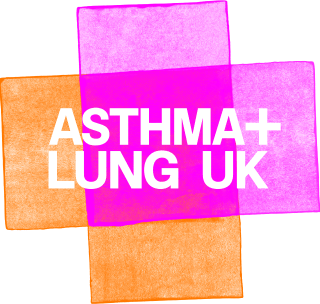Find out about the different treatments available for people living with COPD. You can also read more about things you can do to self-manage your COPD.
Remember: you should have regular check-ups with your health care professional – at least once a year.
Check you’re getting the best COPD care with our COPD passport checklist.
Don’t smoke
If you smoke, the most effective treatment for COPD is to stop. Your health care professional and pharmacist can help you find ways to make it easier for you. You’re around three times more likely to quit with help from support services and medication.
Get vaccinated
Make sure you get your flu jab every year to protect you against the flu viruses likely to be going round over the winter. Vaccination reduces your risk of developing serious complications if you are exposed to flu, such as pneumonia and heart problems. The NHS offers it for free to people living with long-term conditions like COPD.
You should also make sure you’re up to date on your coronavirus vaccinations.
Your doctor should also offer you a vaccination against pneumococcal infection – a bacterial infection that can cause pneumonia and other illnesses. You only need to have this once.
You can avoid infections by staying away from people – including children – who have colds, flu, sinus infections or a sore throat. If you do get an infection, make sure you treat it quickly.
Pulmonary rehabilitation
Pulmonary rehabilitation (PR for short) is a programme of exercise and education designed for people living with COPD. It’s one of the best treatments available for COPD. Ask your doctor or nurse to refer you.
A course lasts about six to eight weeks and you’ll be part of a group.
At each session, you’ll spend about half the time on physical exercise. This will be carefully designed to provide the right level of activity for you. You’ll also get information and tips about things like:
- breathing techniques and positions to help you when you’re out of breath
- how to manage stress
- healthy eating
- how to use your inhalers and other medicines
- what to do when you’re unwell.
PR is about helping you manage your COPD better. It’s a treatment, not a cure, but you’ll feel better, more confident, and in control.
After you’ve completed your course, it’s important to carry on exercising regularly, stay active and use the techniques you’ve learned. Read our information on keeping active or call our helpline to find out more.
Remember – it’s not harmful to make yourself breathless when you’re physically active.
Most people find PR improves their ability to exercise and their quality of life. The impact of PR is often bigger than the impact of taking inhaled medications. By combining the two approaches, you’re likely to get the most benefit.
Have a self-management plan
It’s important you have a plan to help you manage your COPD that’s agreed with your doctor or nurse and reviewed every year. Click here to download a free copy of our self-management plan.
Look after other medical conditions
Most people with COPD have one or more other long-term health conditions. Examples include heart disease, diabetes, osteoporosis, muscle and joint problems as well as anxiety and depression. This can happen because:
- people with COPD may have smoked, and smoking causes other health problems, especially heart disease
- long-term medical conditions are more common as people get older and COPD tends to occur in older people
- COPD makes people breathless and less physically active which increases the risk of other health problems.
It’s important to make sure all your health conditions are well managed, and all your symptoms are properly treated. For example, heart disease is common in people with COPD and can be another cause of breathlessness. Having anxiety can make it harder to cope with feeling short of breath and worsen your breathlessness.
Medications for COPD
You and your health care team will decide together which medications you should use. This will depend on how severe your COPD is, how it affects your everyday life, and any side effects you may have had.
Oxygen therapy
Your health care team may send you to a specialist to see if oxygen therapy can help you. Oxygen is only useful as a treatment for people with a low oxygen level. It doesn’t help breathlessness in people whose oxygen level is not low. It’s not a treatment for breathlessness, which in COPD is usually caused by difficulty moving air in and out as you breathe, rather than by a low oxygen level.
Non-invasive ventilation (NIV)
Sometimes, people who have severe COPD are unable to clear the waste gas carbon dioxide from their lungs, which can cause you to become very unwell. If you are admitted to hospital with a severe flare-up of your condition and high carbon dioxide levels, you may be offered non-invasive ventilation (NIV). This involves wearing a snug-fitting mask over your nose, or over your nose and mouth, connected to a machine that helps air get into your lungs. NIV supports your breathing to give your muscles a rest and helps you breathe out carbon dioxide.
NIV is also occasionally given at home to people with severe, but stable, COPD, who have too much carbon dioxide in their bloodstream (hypercapnia). If you regularly wake up with a headache, tell your doctor. It can be a sign your breathing is shallow at night, and you might benefit from non-invasive ventilation at home. If you are found to have high carbon dioxide levels, then you might be assessed to see if this would be a helpful treatment for you.
Lung volume reduction procedures
Lung volume reduction procedures reduce the amount of air trapped in the lungs. The procedures are a suitable treatment for only 1-2% of people with COPD and only effective for people with emphysema. Lung volume reduction may involve an operation to remove damaged lung or putting valves into the airways to block off the most emphysematous part.
If you have emphysema and you’ve had pulmonary rehabilitation and are still limited by breathlessness, ask your doctor if you might be suitable for a lung volume reduction procedure. This procedure is part of normal NHS care and your GP can refer you to a specialist centre if appropriate.
Lung transplant
A lung transplant is a high-risk major operation and is only suitable for a small number of people. Currently, there are not enough donor lungs available to meet demand.
Whether you can be considered for a lung transplant depends on factors that influence the chance of a successful outcome. These include your general health and fitness, other medical conditions that mean that you would not be able to cope with the procedure and whether you are over or under-weight. You will also need to have not smoked for at least six months. There is no strict age cut-off, but it’s unusual for people with COPD to have a transplant much over 60 years old. Ask your doctor if you think you might be suitable.

Get support
Call or WhatsApp our Helpline for support with your condition. Get advice on your medicines, symptoms or travelling with a lung condition, or just call us to say hello.






